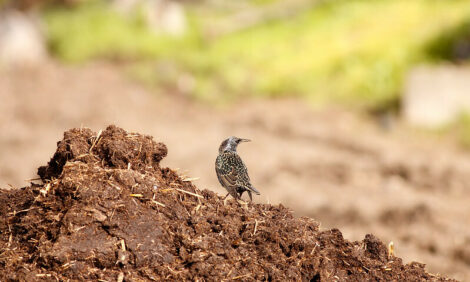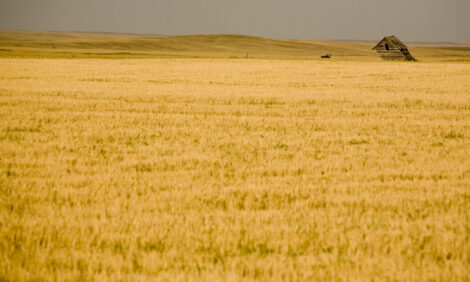



Domestic Livestock Rations Contain More DDGS
US - This year, for the first time, distillers grains will displace more than one billion bushels of corn in domestic feed rations, according to estimates from the ProExporter Network.According to The Progressive Farmer, that statistic, however, is not figured into reporting by the US Department of Agriculture, according to Rick Tolman, chief executive officer of the National Corn Growers Association.
In its reporting, USDA makes a formula-based correction to feed and residual usage, however, that number does not take into consideration the amount of distillers grains that go back into the feed supply for use in livestock rations.
"When USDA tries to balance everything with supply and demand, they adjust or contract the residual number to make it balance," Mr Tolman said. "That's not right or wrong, it's just a fact. Since USDA doesn't conduct surveys on how much corn is fed to livestock, they just lump this in with residual."
In reality, a third of the corn used for ethanol production goes back into the feed supply as distillers grains, but USDA's system of reporting doesn't account for the fact that distillers grains offset some of the feed use of corn.
This has several implications, Mr Tolman said.
First, when USDA shows that 4.7 billion bushels of corn goes for ethanol use, in reality, it is only 3.7 billion. After the ethanol process, a third of the corn kernel is leftover and that goes back into the feed supply and displaces corn.
Secondly, the fact that the amount of corn used by livestock is slowly declining is misleading, Mr Tolman said.
"That doesn't mean livestock are using less corn, it's just that part of that corn is going into livestock rations in the form of distillers grains," he said. "The reality is that statistic would show steady use for livestock if it reflected the amount of distillers grains going back in."
Mr Tolman referred to figures by the ProExporter Network that show USDA's estimated corn use for livestock feed has been in a downward trend since 2006. The amount of corn DDG offset by distillers grains, however, is increasing.
"There is not a decline in the amount of corn going to livestock feed, there is more corn coming back in the form of distillers grain," he said. "We are really at about the same level we were in 2001 and 2002."
These figures help dispel the food vs. fuel debate, as ethanol opponents criticize the industry for using up grain that could otherwise be used for human food or livestock feed.
"This is a fact that critics ignore: that a part of the ethanol process is producing a feed product," he said. "The impact on feed supplies they like to show is not nearly as dramatic because of distillers grains."
Mr Tolman said his goal in raising these issues is so that people know what's behind the USDA numbers.
"Distillers grains have significant implications," he said. "A lot of people criticize ethanol for using a projected 4.7 billion bushels of corn this year. But they give no credit for the distillers grains."
Charlie Staff, executive director of the Distillers Grains Technology Council, stressed that the amount of corn offset by distillers grains has resulted in a large savings to the livestock industry, considering that distillers grains typically sell for about 80 per cent of the value of corn.
"If you figure an average corn price of $4.25 per bushel for the year, the savings to the US animal feed industry would equal $850 million," Mr Staff said. "This is a very large number not being promoted by the ethanol industry."
Mr Tolman agreed that people outside the industry need to be made more aware of the benefits of distillers grains for the livestock industry.
"Distillers grains are a good alternative to corn at a relatively economical price," Mr Tolman said.
Mr Tolman pointed out that almost a third of US distillers grains are exported and said the adoption rate by other countries is growing rapidly. He attributes a large portion of that export growth to the work of the US Grains Council in conducting feeding trials and promoting higher inclusions rates in other countries.
He credited the ethanol industry for working hard to correct concerns over consistency of distillers grains, as well as problems with shipping.
"We've come a long way," he said. "The industry has really done a good job of making distillers more consistent."








